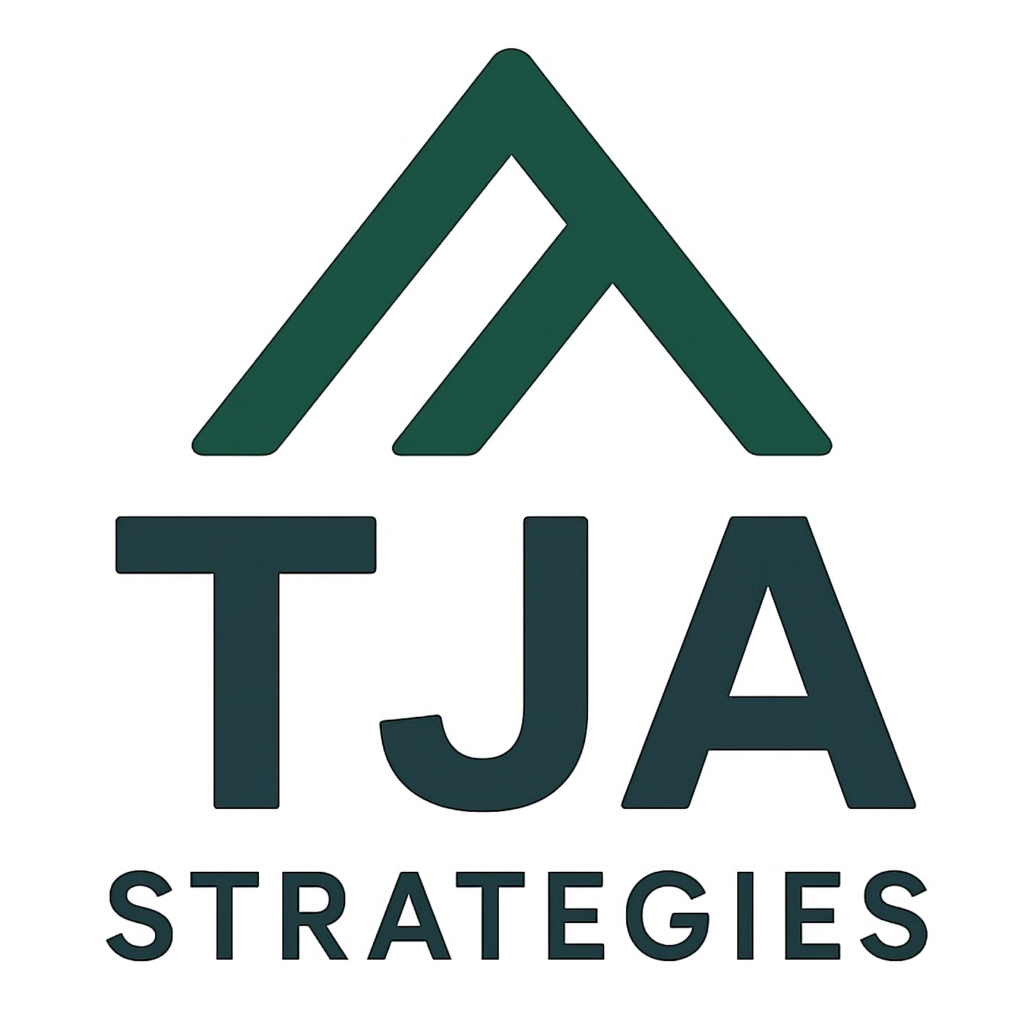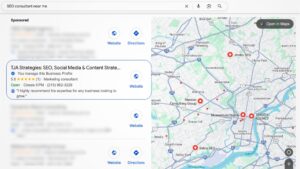If your website traffic looks good on paper but isn’t turning into leads or sales, chances are you’re not matching your content to the right search intent. Search intent (also called user intent in SEO) is the “why” behind a search query. Understanding it means you can create content that actually meets your audience where they are—and move them toward becoming a customer.
In my work at TJA Strategies, I’ve seen this simple shift turn “invisible” content into high-performing traffic magnets. When your SEO content strategy matches search intent, your website becomes a tool for growth rather than a placeholder. Let’s break down the four types of search intent, how to spot them, and how to use them to boost your SEO and conversions.
What Is Search Intent and Why It Matters
Search intent is the goal a user has when typing something into Google, Bing, or an AI-powered search engine. Search engines are designed to deliver the most relevant result possible—so if your content doesn’t match intent, it’s unlikely to rank.
Optimizing for search intent is more than just plugging in keywords. It’s about keyword targeting—aligning your content with where your audience is in their decision-making process, so you’re providing the right information at the right time.
The 4 Types of Search Intent
1. Informational Intent
- Definition: The user is looking to learn something—definitions, how-tos, explanations.
- Examples:
- “What is SEO content strategy?”
- “How to grow Instagram engagement”
- Optimization Tips:
- Create blog posts, guides, and how-to videos.
- Use clear headings (H2/H3) with question keywords.
- Include internal links to deeper, related topics.
- TJA Strategies Tip: This is the best place to establish yourself as an authority. Free, high-value content builds trust.
2. Navigational Intent
- Definition: The user wants to find a specific website or brand.
- Examples:
- “TJA Strategies SEO services”
- “Canva login”
- Optimization Tips:
- Make sure your site ranks for your own brand name.
- Optimize your Google Business Profile and social media bios.
- Use branded keywords naturally on your homepage and about page.
- TJA Strategies Tip: Strong branding and consistent NAP (Name, Address, Phone) info across the web helps here.
3. Commercial Investigation Intent
- Definition: The user is comparing options before buying.
- Examples:
- “Best digital marketing agencies in Philadelphia”
- “iPhone vs Samsung Galaxy”
- Optimization Tips:
- Publish comparison blogs, buyer’s guides, and review roundups.
- Use data, pros/cons lists, and real client examples.
- Apply keyword targeting to ensure your content ranks for competitive commercial terms.
- TJA Strategies Tip: This is prime lead-nurturing territory. Show your expertise and subtly position your service as the winner.
4. Transactional Intent
- Definition: The user is ready to take action—buy, sign up, schedule.
- Examples:
- “Hire a content marketing agency”
- “Book SEO consultation”
- Optimization Tips:
- Create service pages with clear CTAs (calls-to-action).
- Offer easy booking/scheduling options.
- Include testimonials and trust signals.
- TJA Strategies Tip: Keep these pages clean and conversion-focused. Limit distractions.
How to Identify Search Intent for Your Keywords
- Look at the SERP (Search Engine Results Page): What types of content rank? Blog posts? Product pages?
- Check “People Also Ask” Boxes: These often reveal related queries that clarify intent.
- Use Keyword Tools: SEMrush, Ahrefs, and Google Keyword Planner can tag keywords by intent.
- Test & Measure: Publish content and monitor click-through rate (CTR) and engagement.
A strong SEO content strategy always starts with identifying the types of search intent that matter most for your audience.
Optimizing Content for Each Intent
- Informational: Focus on value, readability, and depth. Use infographics or short videos.
- Navigational: Ensure your site architecture is intuitive and your brand name is prominent.
- Commercial: Offer transparent comparisons and actionable advice.
- Transactional: Make the CTA impossible to miss and friction-free.
Example: Turning Search Intent Into Leads
Let’s say a prospect searches “best social media strategy for small business” (commercial intent). They find your blog comparing different strategies, see your expertise, and click an internal link to your “Social Media Management Services” page (transactional intent). That’s the power of aligning with intent—it shortens the buyer’s journey.
The Bottom Line
When you understand user intent in SEO and optimize for the types of search intent, you stop guessing what your audience wants—you meet them exactly where they are in their journey.
For many of my clients at TJA Strategies, this has meant more qualified leads, better SEO rankings, and higher conversions without spending more on ads.
Want to know if your site is matching the right search intent?
Book your free SEO & Content Strategy Audit and let’s find opportunities to get you in front of the right audience.




